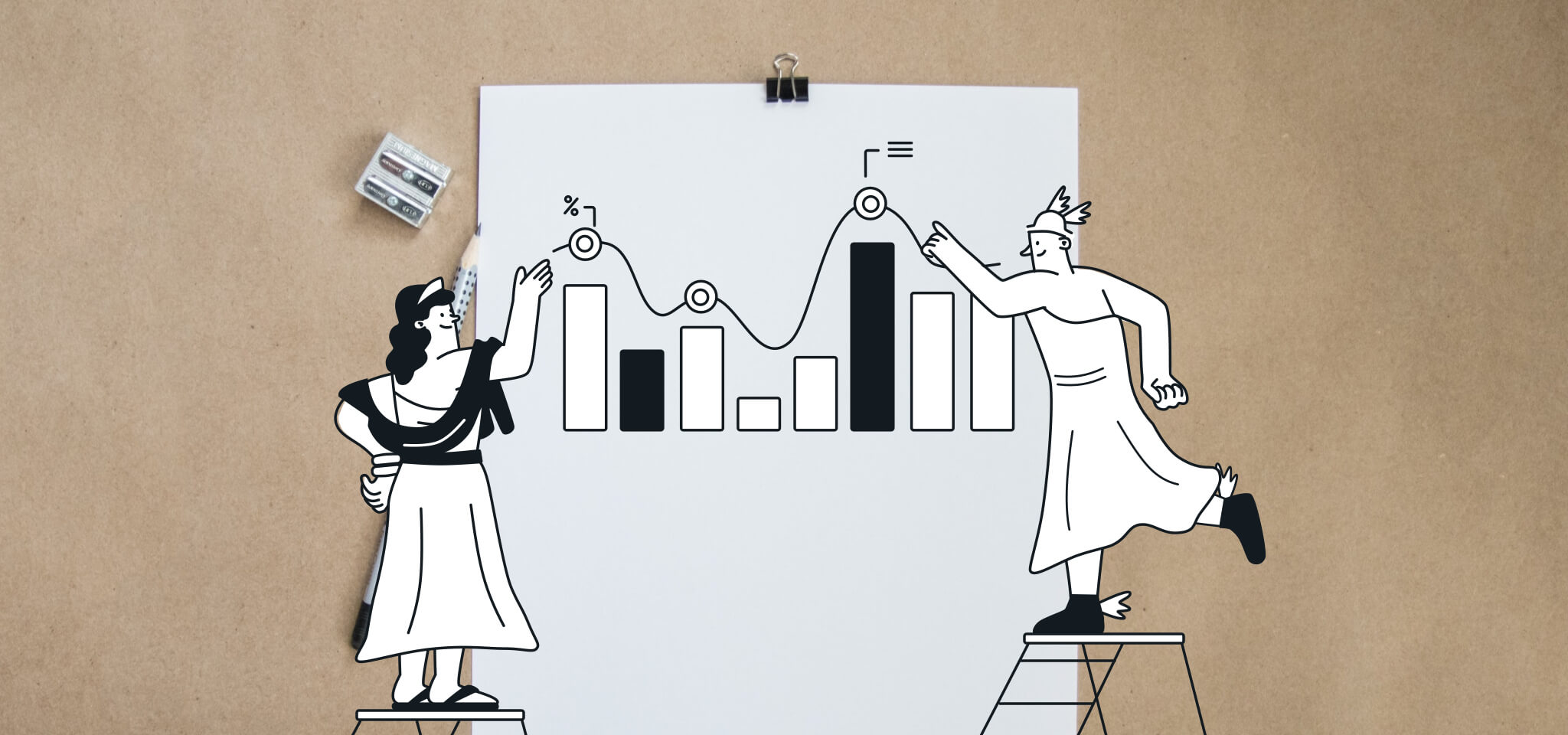Marketing
Why green marketing strategies are good for business [Infographic]
Dive into some research that shows how important sustainability is becoming to consumers. Then, get ideas for your green marketing strategy, including email marketing examples.

PUBLISHED ON
There are plenty of marketers out there who care a whole lot about the environment and protecting the planet. Those same marketers are smart enough to know that many customers and prospects share that feeling and the desire to do something.
Maybe you want to be a voice for change in your organization. Or you may simply believe that it’s important to be transparent about your brand’s sustainability efforts. First, however, you need to get other people in the organization on the same page. This article and our green marketing infographic will help you get buy-in for green marketing projects and a greater commitment to sustainability.
There is no shortage of research that makes it clear that investing in sustainability is a wise business decision.
But we’re not saying that the reason to be environmentally responsible is that a business might make a few extra bucks. There are plenty of good reasons for organizations to reduce their carbon footprint and make eco-conscious decisions:
Because being sustainable makes companies more efficient and productive.
Because it helps organizations in some industries stay ahead of environmental regulations.
Because it improves the way customers and prospects view your brand.
Because Earth is our home, and we probably shouldn’t destroy it.
While we believe that the last reason is by far the most important, in this article, we’re going to focus on the third reason on the list above. That's because you’ve got to give the people what they want. And a lot of people want to buy from sustainable brands. Use these stats to make a case for going green in the company where you work.
Table of contents
1. Welcome emails
2. Product promotion
3. Subscriber engagement
4. Cause marketing
5. Win-back campaigns
Eye-opening research on going green
We dug up a bunch of recent studies from reputable sources and compiled some compelling stats on sustainability. Seeing it all reveals the reasons why green marketing makes a lot of sense.
Check out our infographic below to find out more about why green marketing strategies could be one of the keys to getting noticed, earning trust, and building a business.

The shift in consumer behaviors
The most convincing reason to include sustainability efforts in your marketing strategy has to do with the people who pay for your brand’s products and services. Many of them care about sustainability and they’re on the lookout for brands that are going green.
An IBM study found more than half of consumers (51%) care more about sustainability now than they did just 12 months ago. Green marketing strategies can tell your target audience exactly how environmentally friendly your brand is or how you can help them live sustainably. In other words, green marketing strategies show customers you care too.
Overall interest in sustainability is also growing. One way to keep track of what’s on the minds of consumers is to watch what they search for online.
According to Google, search phrases using the words “sustainable” and “environment” were both up 30% in 2021. That means consumers are searching online for things like:
“[Your products and services] that are good for the environment”
“[Your industry] brands that support sustainability”
People are becoming more aware of and concerned about things like climate change, carbon emissions, and reducing waste. They want to do something to make a difference or make their voices heard. And the best way to do that is with their wallets.
Sustainable purchasing habits
The 2021 Global Sustainability Report from the consultancy Simon Kucher & Partners found that 85% of people around the world say they’ve shifted toward making greener purchases in the last five years.
IBM’s research also revealed that nearly half of survey respondents claim they paid a “premium” price for sustainable products in the last year. Other studies show the willingness to pay more or to exclusively choose sustainable options differs between generations and geographic regions. However, what’s clear is that sustainability matters to a significant percent of the population - no matter the age or location. It’s a good reminder that we’re all in this together.
Being a sustainable organization could keep you from losing customers as well. According to 2021 research from Deloitte, nearly a third of consumers have stopped purchasing certain brands or products because of ethical or sustainability concerns.
How brands are responding
As major consumer brands begin to notice how important sustainability is to shoppers, they’ve publicly announced lofty Environmental, Social, and Governance (ESG) goals. That could include pledges to switch to all recyclable packaging or dramatically reduce emissions.
According to a Forrester Research survey, which was featured in a 2022 Shopify report, 46% of retailers and consumer packaged goods (CPG) companies are focused on making products and packaging recyclable. But consumer brands are also looking at ways to make manufacturing practices more efficient while reducing and tracking carbon emissions.
Forrester Research found that 36% of companies surveyed are distancing themselves from partners that fail to meet shared sustainability goals.
That means failing to go green could impact B2B decisions too.
The yearly corporate sustainability report has become quite common among larger organizations. These reports support a transparent approach that can also fuel a green marketing strategy. But how do you find the right way to incorporate sustainability into your messaging and marketing tactics?
Choosing the right green marketing strategy
If you want people to know that your brand cares about the environment and actively pursues sustainability, you’ve got to tell them. That’s probably why Harvard Law School found that 95% of sustainability reports in 2021 were available to download as PDFs. Researchers also found that 76% of those reports were promoted with a press release.
Public relations efforts around sustainability can certainly help. Deutsche Bank research found companies that received positive press around climate change outperformed competitors while those that experienced bad press underperformed.
However, it may be smart to avoid too much boasting and bragging about your brand’s efforts to go green, especially if you’re tying press releases on sustainability to key dates. Instead, green marketing strategies can make customers the heroes of the story.
People choose to buy from sustainable brands because of how it makes them feel.
That could mean your company’s values align with the customer’s personal beliefs. It could also mean you showcase green products or work to build a sustainable website. Green marketing is also an opportunity to empower customers to make informed decisions about what they’re buying and how it impacts the planet. And when a purchase decision makes them feel good about themselves, they’re more likely to feel good about buying from you again next time.
So, you really have two basic choices when it comes to green marketing strategies:
Promote what your company is doing to be more sustainable.
Talk about how your brand and your customer can work together to protect the planet.
Green marketing ideas for email
Email is the perfect channel for telling customers and subscribers about how your organization is going green. It’s also an ideal way to encourage people to be more sustainable.
Here’s how some major brands used email in their green marketing strategies:
1. Welcome emails
A good welcome email makes subscribers feel like they joined something special when they signed up. Fussy tells new subscribers about its refillable deodorant containers by inviting people to join them in their mission to reduce plastic waste.

View this campaign on Really Good Emails
2. Product promotion
The brand Tovala promotes its meal kit delivery services by showing subscribers how it supports sustainability across the supply chain. That includes recyclable packaging and the methods it uses to reduce food waste. This kind of green marketing strategy makes subscribers feel good about their decision to buy from Tovala. It might even make things tastier!

View this campaign on Really Good Emails
3. Subscriber engagement
Men’s fashion brand Eton doesn’t just tell its subscribers about its vision for sustainability. This email campaign asks them for input. In this campaign, Eton calls on its customers for advice on improving its sustainability agenda. A green marketing strategy like that makes consumers feel more connected and involved with your brand. You share their concerns, and you care what they think.

View this campaign on Really Good Emails
4. Cause marketing
Eco-conscious brands can also make support for sustainable charities part of a green marketing strategy. In fact, these kinds of donations could also help organizations offset their own carbon emissions.
The brand Everlane used online holiday shopping as a way to give back. In 2021 it launched a Black Friday email promotion to raise money in support of sustainable farming. Every order equaled a donation to the Rodale Institute.

View this campaign on Really Good Emails
If your company is looking for a charity to support, check out Giving Green to find responsible organizations that are making a difference.
5. Win-back campaigns
You can even use green email marketing to retain and reactivate customers and subscribers. The Washington Post encouraged former readers to re-subscribe by touting the publication’s in-depth coverage of climate change stories.
It’s quite likely that email marketers knew which contacts had been reading sustainability-related articles and sent this email to a specific segment.

View this campaign on Really Good Emails
Choose transparency over hype
The biggest mistake marketers can make with green marketing strategies is promoting false or deceptive claims about a company’s sustainability efforts. You also don’t want to appear as if you’re using issues like climate change only to make money. Even though green marketing is good for business, greed and profits shouldn’t be the motive.
That’s a tactic known as “greenwashing.” If you want to stay on the good side of young consumers who share the views of Swedish environmental champion Greta Thunberg, stay away from greenwashing at all costs. As Greta told the United Nations in 2019...
“Entire ecosystems are collapsing. We are in the beginning of a mass extinction. And all you can talk about is money and fairy tales of eternal economic growth. How dare you!”
Greta Thunberg
Before you start using green marketing in your email strategy, make sure your brand can back up any claims, make environmentally-friendly changes, and encourage your employer to take action against climate change. People with strong beliefs can tell when marketing isn’t authentic.
That’s one reason why Sinch Mailjet is proud to be supporting the Email Expiration Date initiative. Because even email has a carbon footprint, and it’s our industry’s responsibility to find sustainable solutions.








